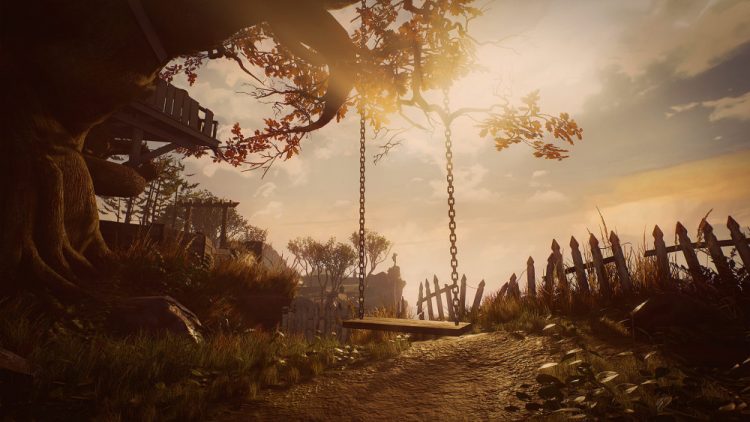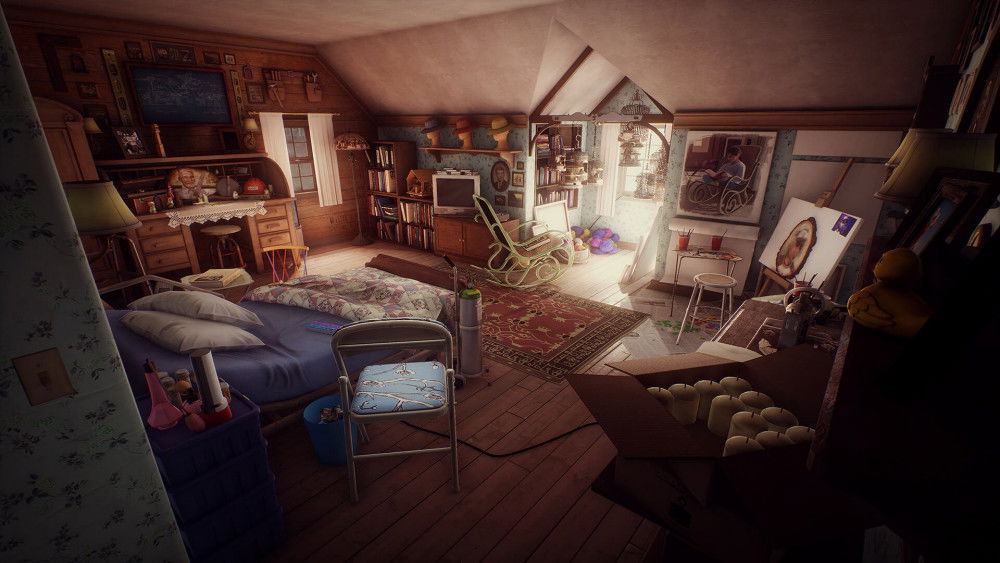“What kind of family finishes building a cemetery before starting a house?”
Game Name: What Remains of Edith Finch
Platform(s): PS4, PC
Publisher(s): Annapurna Interactive
Developer(s): Giant Sparrow
Release Date: April 25, 2017
Price: $19.99
What Remains of Edith Finch follows Edith, the last surviving member of the Finch family. Finches have some incredibly bad luck – they either die tragically young or in bizarre ways. What Remains of Edith Finch is one of the more interesting “walking simulators” around. While it does not reinvent the genre, it is incredibly well-written and engaging throughout (even if it is a bit short). By sharing the stories of people from different time periods, ages, and backgrounds, Edith Finch never has to commit itself to one tone. All at once it is tragic, unsettling, and even nostalgic.
The game begins with Edith’s arrival at the abandoned Finch mansion. Edith, a 17-year-old girl, was kept in the dark about the nature of her family’s lives and deaths. She returns to the house to learn more about them by unlocking closed doors and exploring secret passages. All this is made clear in the opening of the game. But for a game that tells you right off the bat that yes, everyone dies, it has more than a few tricks up its sleeve.
By telling different stories from different perspectives over the years, Edith Finch has freedom to experiment with tone and play style. You play as children and adults through the early 1900s to the modern day. You see where the Finches lived and worked, and ultimately how they die. When their stories conclude, you return to Edith, who will continue investigating the Finch estate. One of Edith Finch‘s great strengths is its linear storytelling. The game does a good job of directing players to a single path to continue the story. I never had to backtrack through old rooms to find the next piece of the story, and the stories are told in a specific order which keeps pacing deliberate and consistent.
As much as I dislike the term, What Remains of Edith Finch is a “walking simulator”. I think whoever coined the term clearly was not a fan of games in this genre, but there really is no other way to describe it. Edith Finch is a first-person, narrative driven game where you explore environments and interact with certain objects to uncover the story. If you do not like games like Gone Home, Firewatch, or Everybody’s Gone to the Rapture, you more than likely won’t like Edith Finch.
In regards to performance, I noticed a few significant drops in framerate when the game autosaved, which seems to be a common issue with the PS4 version. These drops didn’t last more than a few seconds and didn’t detract to much from the experience, but it is noticeable.
It is worth mentioning that What Remains of Edith Finch can be completed in roughly two hours. Games like these are often best experienced when played in one sitting, but some players may be turned off by the price tag. While I might agree that $19.99 is a bit steep for a game this short, Edith Finch does not waste time telling its story. If this game were any longer, it might overstay its welcome. There are enough captivating stories to keep players engaged from start to finish, and making this game any longer might take more away from the experience than it adds.
What Remains of Edith Finch speaks to the unconventional and compelling ways games can tell stories. Each story is unique, and every Finch is characterized incredibly well in a short amount of time. Their sadness, anxiety, wisdom, or playfulness shines through in the way their section feels and plays. It begs you to question what it real or imagined, and invites you to believe in the Finch family curse. It certainly isn’t a game for everyone, but there is no denying that there’s nothing quite like Edith Finch.
*For more information on how we review video games and other media/technology, please go review our Review Guideline/Scoring Policy for more info.
Summary
For those who can’t stand the “walking simulator” genre, Edith Finch likely won’t change your mind. But Edith Finch does incredibly interesting things for fans of these kinds of experiences. Telling stories from different perspectives throughout time allows it experiment with different types of gameplay in different settings. At two hours it may be a bit short, but ultimately I was satisfied with its conclusion.
-
Witty sentence here and the score. remember to use the star system!



